How white and affluent drivers are polluting the air breathed by L.A.’s people of color
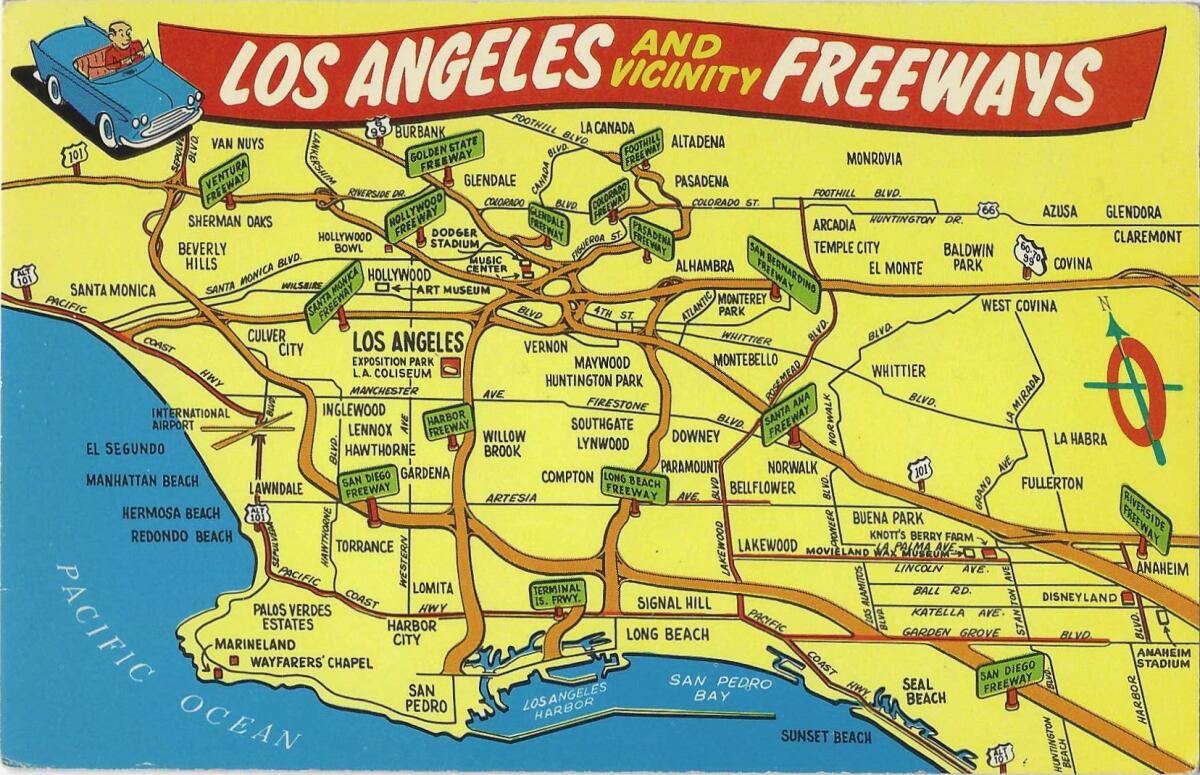
- Share via
This story originally published in Boiling Point, a weekly newsletter about climate change and the environment. Sign up here to get it in your inbox.
Like many Angelenos, I spend a lot of time behind the wheel of my car. I drive from my Westside apartment to Dodger Stadium near downtown and farther east to hike in the San Gabriel Mountains. I take the 405 Freeway north to the San Fernando Valley to see friends, or occasionally south to the L.A. Times office — or to the airport, where I grow my carbon footprint even further.
So I couldn’t help but consider my own complicity while reading a new study from USC researchers, finding that Angelenos who drive more tend to be exposed to less air pollution — and Angelenos who drive less tend to be exposed to more pollution.
It may sound like a paradox, but it’s not. It’s a function of the racism that shaped this city and its suburbs, and continues to influence our daily lives — and a stark reminder of the need for climate solutions that benefit everyone.
My colleague Terry Castleman wrote about the study, which was published in the peer-reviewed journal Urban Studies. The core finding is that for every 1% increase in miles driven to and from work by people who live in a particular part of L.A. County, there’s an estimated 0.62% decrease in the lung-damaging “fine particulate matter” to which those Angelenos are exposed.
How is that possible? I asked the study’s lead author, Geoff Boeing, a professor at the USC Sol Price School of Public Policy.
He told me it largely comes down to the shameful history of Los Angeles County’s low-income communities of color being torn apart to make way for freeways — a history that has been extensively documented by The Times. Today, many residents of the county’s whiter, more affluent neighborhoods — who were often able to keep highways out of their own backyards — commute to work through lower-income Black and Latino neighborhoods bisected by the 10, 110 and 105 freeways and more.
“It’s not like commuters are coming in and shopping in those communities, patronizing restaurants,” Boeing said. “They’re just driving through to get from one side of the city to the other.”
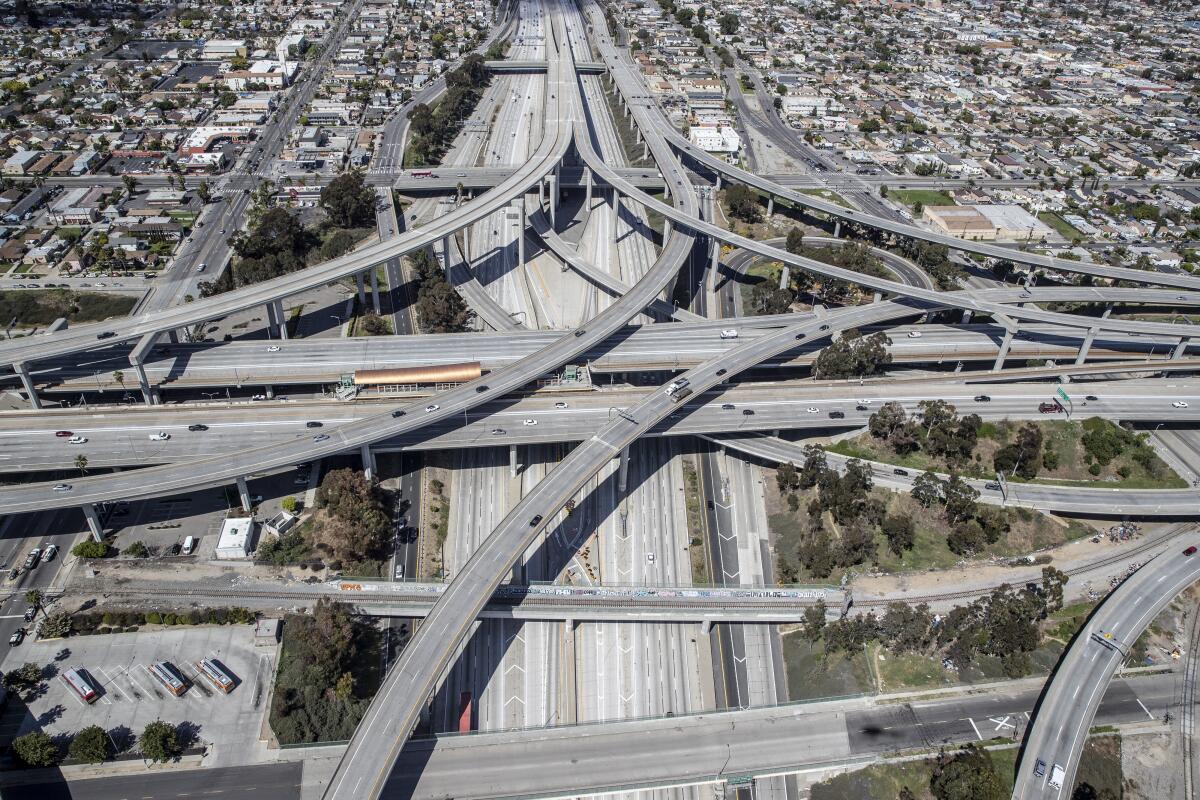
Southern California has some of the nation’s worst air quality. Cars and trucks are one of the main reasons why — and the closer you are to the source, the more danger you face. Whenever I move, I insist on finding an apartment at least 1,000 feet away from the nearest freeway, after reading an L.A. Times investigation revealing that people who live near freeways suffer higher rates of asthma, heart attacks, strokes, lung cancer, pre-term births and potentially other illnesses, such as dementia.
Boeing has gone a step further, taking an air-quality monitor with him when he and his wife were looking for a new home a few years ago. He got one of his highest readings for particulate matter near the 101 Freeway in Echo Park.
“I have a small child. I try as hard as I can to avoid air pollution,” he said.
Boeing’s family moved to South Pasadena — the “ultimate suburban flight story,” as he put it, and a place with a “terrible racial history.” Residents of the relatively affluent, predominantly white city were able to block construction of the 710 Freeway through their neighborhoods. As a result, he told me, truck traffic from the ports of L.A. and Long Beach ends up routing through lower-income neighborhoods in Alhambra, a city whose population is overwhelmingly Asian and Latino.
Boeing is acutely aware that he and his wife and son are the beneficiaries.
“I absolutely love that there are no freeways anywhere near us,” he said.
As a white guy who’s lived on L.A.’s Westside for most of my life, I’ve benefited from the region’s sordid history as well. Much as I try to do my part — taking the train a couple times a month, walking to local coffee shops and restaurants instead of driving across the city — there’s no question I contribute to the inequitable air pollution that Boeing’s study describes.
I was especially struck by this map from the study. The red areas are places in L.A. County where commuters tend to be whiter than people who live there; the blue areas are places where commuters tend to be less white than people who live there:
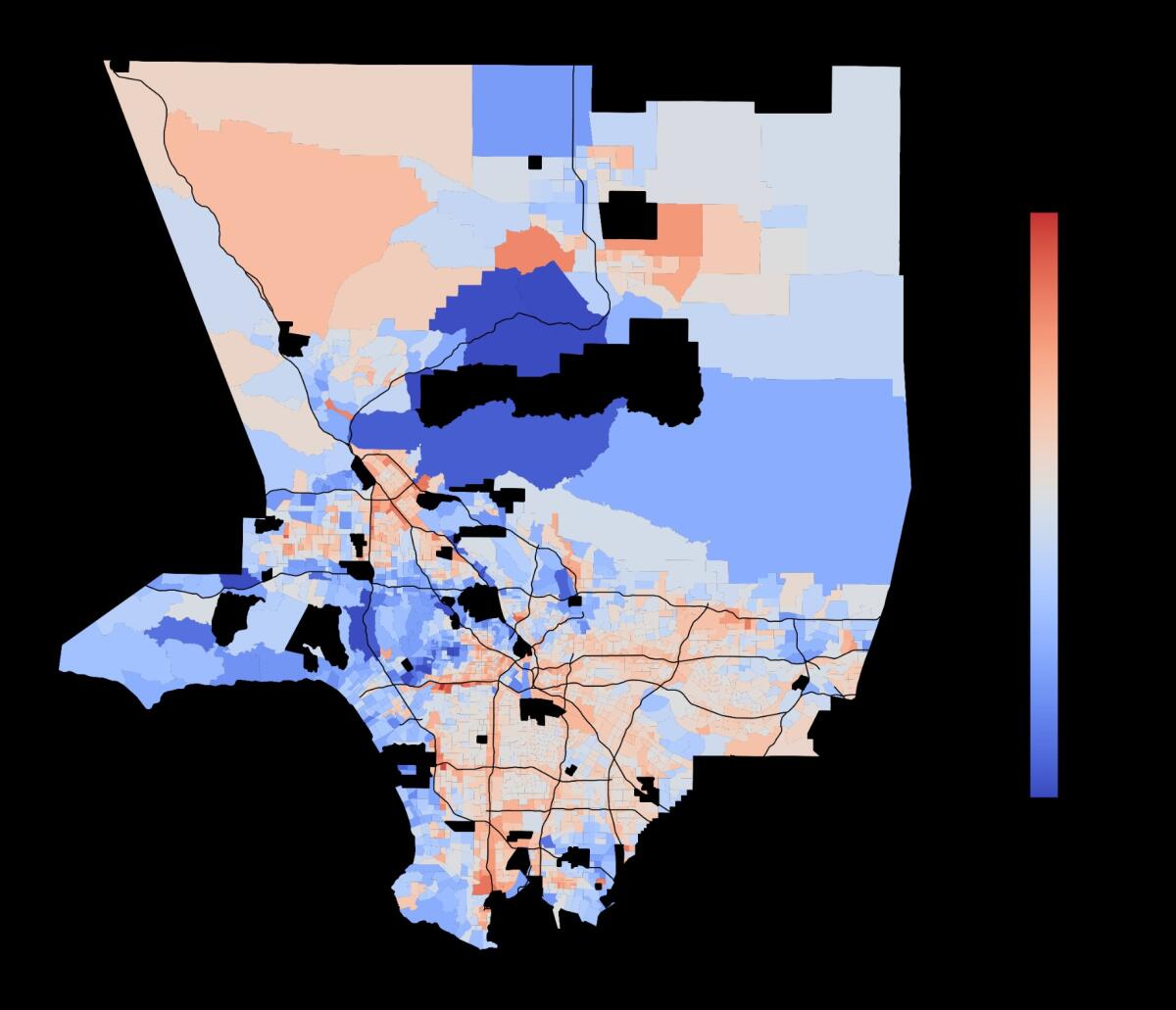
Indeed, my drive to Dodger Stadium on the 10 Freeway mostly takes me through red areas. At the same time, it’s interesting to note that long stretches surrounding the 405 and 101 freeways are blue — largely a function of geography, Boeing said, with urban planners having no choice but to route those highways through narrow passes in the Santa Monica Mountains.
Overall, though, the map shows how residents of whiter, wealthier communities disproportionately drive to work through lower-income Latino and Black neighborhoods, spewing pollution. Residents of those neighborhoods can’t do much about it.
“If you want to be exposed to less pollution, you can’t be the change you want to see in the world,” Boeing said. “It’s up to everybody else who is taking advantage of public infrastructure and releasing tailpipe emissions.”
Boeing was careful to note that the study doesn’t conclusively prove that patterns in how Angelenos get to work are solely responsible for different levels of air pollution in different communities. Majority-white Westside neighborhoods, for instance, could also be benefiting from ocean breezes that push pollution into predominantly Black and Latino areas, he said.
But the researchers’ close examination of driving patterns, commute distances and pollution — which involved a combination of data analysis and modeling — painted a clear picture of environmental injustice, Boeing said. In addition to the link between air quality and miles driven, his team found that non-white communities face higher pollution levels across the board.
So what do solutions look like? Getting more people into electric cars is definitely one of them. Another USC study published last month found that as more people drive zero-emission cars in California, fewer people are being sent to emergency rooms due to asthma — at least in the areas where people are buying and leasing those cleaner vehicles.
Gov. Gavin Newsom has set a goal of ending the sale of most gasoline vehicles by 2035. The climate bill signed by President Biden, though, could complicate that effort. As The Times’ Russ Mitchell explains, the Inflation Reduction Act is set to phase out federal tax credits for electric cars that aren’t built in the U.S. — at least a temporary obstacle for some automakers.
Regardless, switching from oil to electricity won’t solve everything, as Boeing’s study notes. Electric vehicles still produce harmful air pollution via dust from brake pads and toxic chemicals in tires. And cars of all kinds can kill pedestrians and drivers.
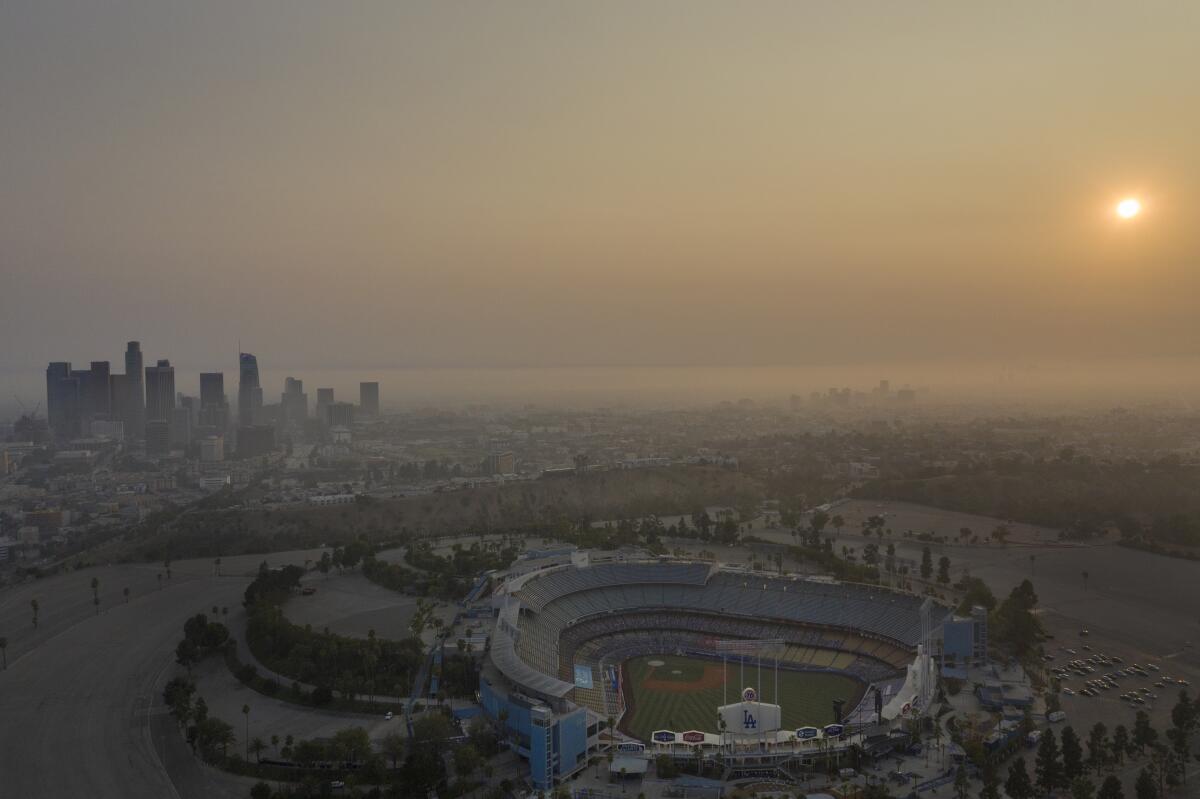
Policymakers could help limit the need for long commutes, Boeing and his co-authors wrote, by offering tax credits to incentivize working from home and charging “congestion taxes” to make driving more expensive — an idea being studied by L.A. County.
The researchers also called for government to allow more apartment construction in wealthier neighborhoods, to make it easier for low-income families to live closer to where they work — instead of in far-off enclaves burdened by freeway pollution.
Building more public transit could make a difference, too. But Boeing suggested that Southern California officials focus on buses more than trains, because the region’s sprawling suburbs often don’t lend themselves well to commuter rail.
“It’s hard to say that those hundreds of dollars in rail investment are really going to work when there aren’t that many people within walking distance of those stations,” he said. “Buses need to be a more central part of the solution in Los Angeles, because you can provision hundreds of buses with frequent service for far less money than one train.”
Unfortunately for public transportation fans, Newsom has proposed $2 billion in budget cuts for transit projects that critics say would make it even harder for local transit agencies — already struggling with lower ridership and decreased revenues coming out of the pandemic — to attract and retain riders. Newsom is due to release a revised budget proposal in May.
I realize it’s not on my shoulders alone to make up for a long history of racist housing policies and freeway construction. The same goes for you, if you’ve also benefited from that history. Finding ways to minimize and reverse ongoing inequities, while solving the climate crisis, is a project for all of society — government, industry and individuals alike.
But to the extent I can help, by driving less and taking transit more? And by spreading the word about studies like this one?
That’s an easy win.
And now, here’s what else is happening around the West:
TOP STORIES
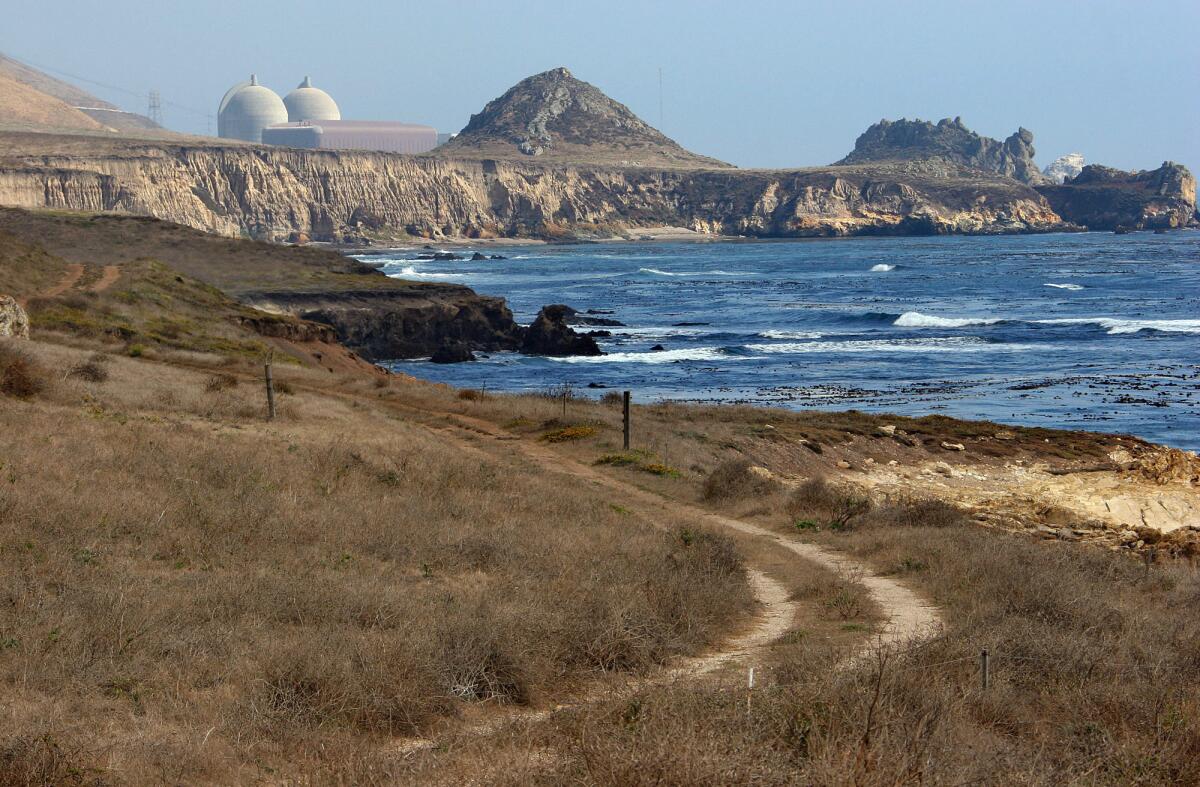
Gov. Gavin Newsom and Pacific Gas & Electric cleared a major hurdle in their bid to keep the Diablo Canyon nuclear plant running. Federal regulators decided they’ll allow PG&E to keep operating the uranium-fueled reactors beyond 2025 while the company applies for a new license, as I reported for The Times. There are still several obstacles for Newsom and PG&E to clear, but it’s looking more and more likely that nuclear power will play a role in California’s future — at least through 2030. Elsewhere in the West, supply chain-related cost increases haven’t stopped a group of small electric utilities from sticking with a plan to buy energy from small nuclear reactors proposed by Oregon-based startup NuScale, as Wired’s Gregory Barber reports.
Is it time for California to revamp its water rights system, which dates back to the Gold Rush? Many experts and activists think so, citing the system’s racist origins and the inability of state regulators to adequately police violations, my colleague Ian James reports. And if you’re wondering whether this is still relevant after the recent storms — yes, it most definitely is. Even with statewide snowpack approaching an all-time record and 17% of California no longer experiencing drought conditions, we’ve still got massive long-term water challenges. Just this week, state officials rejected groundwater sustainability plans developed by agricultural water agencies across much of the San Joaquin Valley, declaring them inadequate to protect underground aquifers and household drinking water wells, James reports. Salmon populations, meanwhile, are so low that regulators may ban coastal salmon fishing this year for only the second time. And while more rain and snow are on the way, there’s at least an outside chance of warm storms that could start melting the Sierra Nevada snowpack earlier than desired, Hayley Smith writes.
Seriously though, the Golden State’s recent storms wreaked havoc. National parks from Yosemite to the Mojave Desert shut down, and dozens of gas leaks were reported as homes caught fire and exploded in the San Bernardino Mountains. Not all the fallout was bad, though: Temporary waterfalls cascaded down the San Gabriel Mountains, and just look at these before-and-after photos of two of the state’s biggest reservoirs, Shasta and Oroville. Keep this in mind, too: Even as climate change brings more intense downpours, Los Angeles has a long history of destructive storms. The Times’ Patt Morrison wrote about how L.A.’s history of deadly floods led to the straitjacketing of the Los Angeles River — and ultimately to the loss of trillions of gallons of rainfall that could be replenishing our groundwater aquifers right now. Also check out this piece by KCRW’s Caleigh Wells, which explores how returning the L.A. River to a more natural state could help us capture more water and provide badly needed green space.
POLITICAL CLIMATE
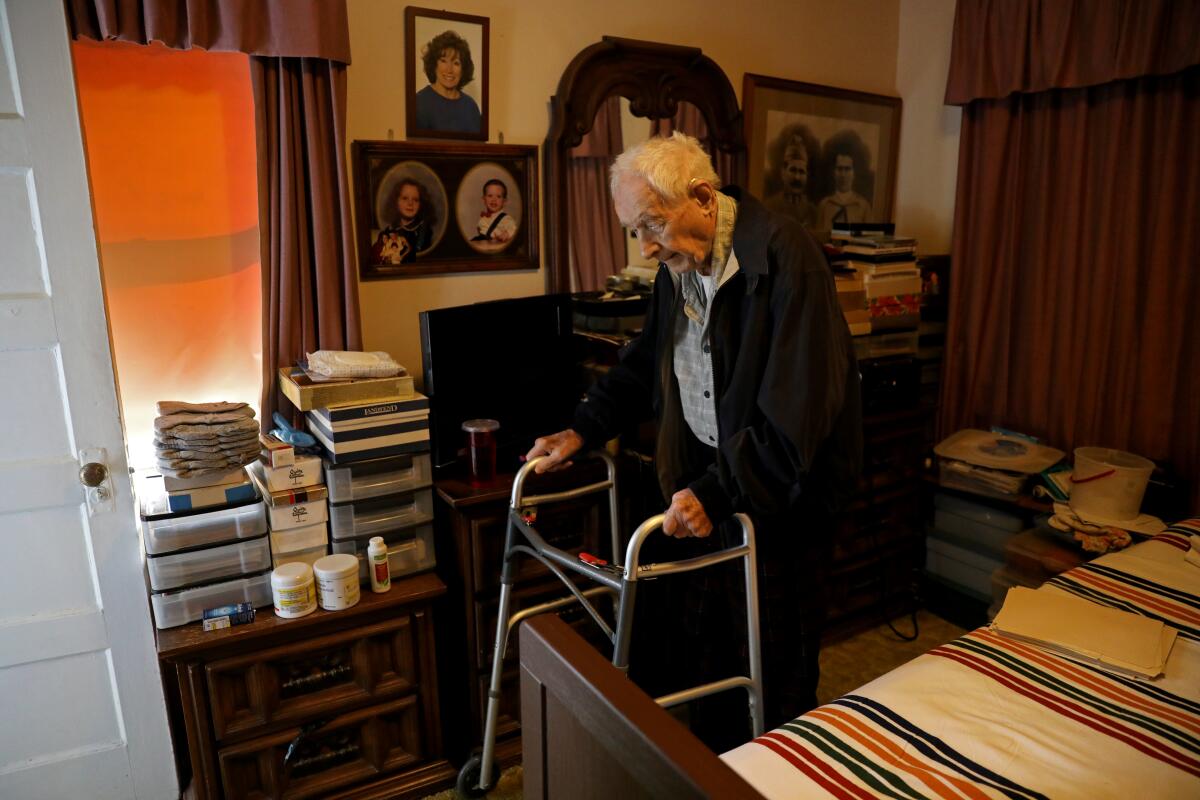
Southern California residents slammed by exorbitant natural gas bills the last few months are furious over a proposal by Southern California Gas to increase revenues by $4.9 billion over the next five years. While this is partly a case of bad timing for SoCalGas — utility rates go up all the time, often to pay for necessary infrastructure projects — cash-strapped customers are urging state officials to reject the rate increase, as The Times’ Terry Castleman reports. Various advocacy groups, meanwhile, have alleged price-gouging by SoCalGas and are asking L.A.’s city attorney, Hydee Feldstein Soto, to investigate. Adding to the outrage was this column by The Times’ Steve Lopez, about a 102-year-old World War II veteran struggling to pay a $526 gas bill on top of astronomical healthcare costs. Lopez’s column led to an outpouring of financial support for the veteran.
A California lawmaker introduced a bill to ban paper receipts, citing the carbon pollution generated by cutting down trees and the dangerous chemicals that receipts sometimes contain. Here’s the story from Terry Castleman. If this sounds like a no-brainer to you, you should know that the same lawmaker, Assemblymember Phil Ting (D-San Francisco), introduced a similar bill in 2019 — only to see it defeated amid opposition from the California Chamber of Commerce and other business groups.
Federal officials will hold back water in Flaming Gorge Reservoir and release less downstream to Lake Powell. More here from CNN’s Ella Nilsen. The Colorado River’s Upper Basin states — Colorado, New Mexico, Utah and Wyoming — successfully argued that recent snowfall reduced the need to prop up Lake Powell, which they basically use as a bank account to meet their obligation to deliver water to California, Arizona and Nevada. Elsewhere along the Colorado River, Sen. Michael Bennet (D-Colo.) and Rep. Joe Neguse (D-Colo.) are urging the Biden administration to block a crude-oil train from Utah to the Gulf Coast, saying a derailment like the one in East Palestine, Ohio, could pollute the river’s headwaters. Here’s the story from Paolo Zialcita at Colorado Public Radio.
THE ENERGY TRANSITION
Nevada is poised to become the “Silicon Valley of lithium” as construction begins on America’s second lithium mine. Although conservationists and Native American tribes failed to block the Thacker Pass mine, their concerns over destruction of wildlife habitat and sacred sites remain a potentially significant obstacle to additional lithium extraction, as Hannah Northey and Timothy Cama report for E&E News. Elsewhere in the Silver State, the Greenlink West power line could help get thousands of megawatts of solar power built. But it could also pass through a national monument north of Las Vegas that protects Ice Age fossils — and just like with lithium, the conflict has spurred opposition to the power line, E&E News’ Scott Streater writes.
A German asset manager and the Canada Pension Plan Investment Board acquired California’s second-largest oil producer, Aera Energy, in a deal worth nearly $4 billion. The new owners say they’ll invest more in renewable energy and carbon capture, per John Cox at the Bakersfield Californian. Aera will definitely still be an oil company, though, in a state that consumes a lot of oil. Electric cars could help solve that problem — and maybe hydrogen would help, too? L.A. Times columnist George Skelton is singing the praises of hydrogen-fueled vehicles. And an L.A.-based startup managed to fly a 40-seat airplane, mostly powered by hydrogen, over Washington state for 15 minutes. Details here from Canary Media’s Maria Gallucci.
A new report from the National Renewable Energy Laboratory finds California could reduce carbon pollution and save money by coordinating its power lines more closely with other Western states. “We’re going to see an expanded grid in the West. The question is whether California can help lead the way,” one clean energy advocate told the Sacramento Bee’s Ari Plachta. For background on this idea, see my story from a few weeks ago. See also this piece by Jeff McDonald at the San Diego Union-Tribune, about a group with a history of fighting long-distance power lines suing to overturn San Diego County’s climate plan. They say it underestimates the potential for rooftop solar, and was crafted in part by a researcher with ties to the utility industry.
AROUND THE WEST
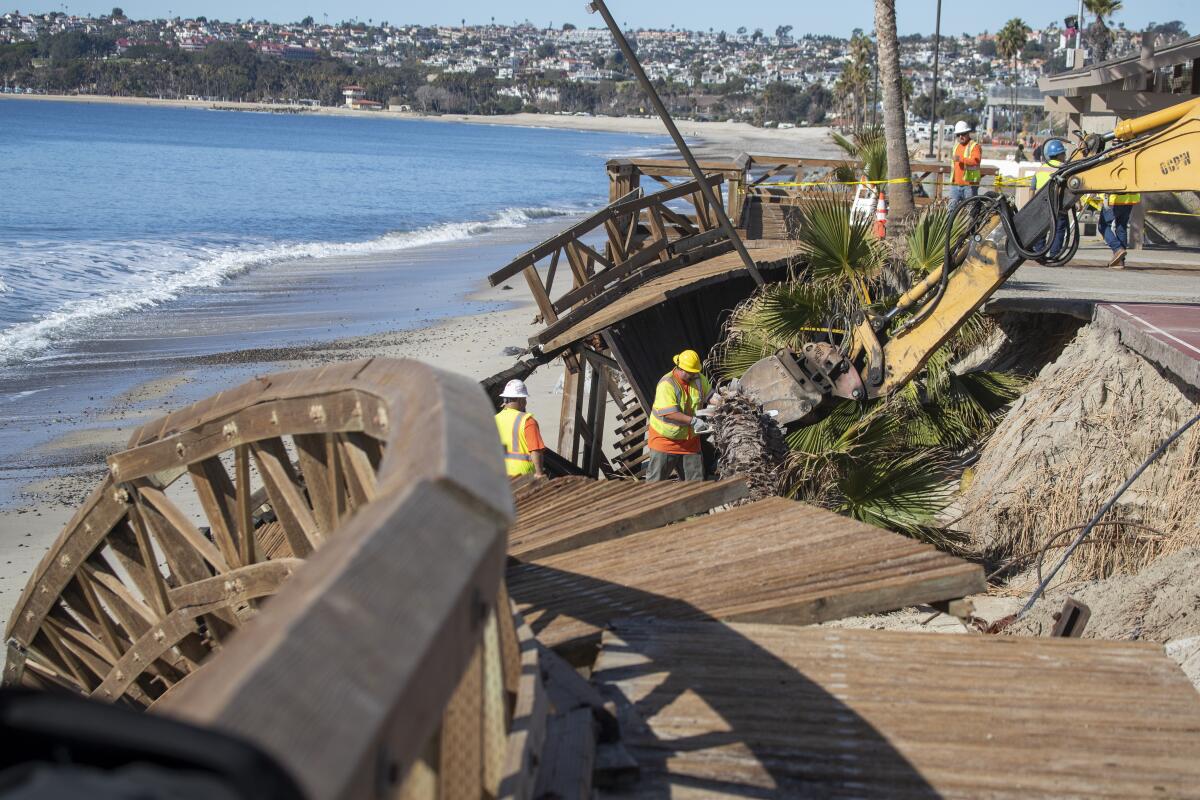
For many years, Orange County resident Gustavo Arelleno couldn’t bring himself to worry about sea level rise along the county’s affluent coastline. But in his latest column for The Times, Arellano explains how he learned to care — even if he still doesn’t exactly love the coast. “There’s a reason the Native Americans, Spaniards and Mexicans left this part of the coast largely untouched. In a battle between humans and the Pacific, the Pacific will always win,” he writes. Up the coast just a bit, there’s a slow-moving landslide that’s literally pushing homes across property lines on the Palos Verdes Peninsula. My colleague Jack Fleming wrote a fascinating story about plans to stop the sliding, which involve draining water from beneath the peninsula.
The shipping companies whose boats may have damaged an underwater oil pipeline — and thus caused a major spill off the Southern California coast in 2021 — have agreed to pay the pipeline company nearly $100 million. The settlement does not include an admission of liability, my colleagues Laura J. Nelson and Hannah Fry report. In other coastal news, a new study finds that sewage spilling across the U.S.-Mexico border through the Tijuana River isn’t just fouling San Diego County beaches — it also gets into the air, potentially harming a lot more people, per Joshua Emerson Smith at the San Diego Union-Tribune.
Ranchers who graze livestock on federal lands will once again pay just $1.35 per animal unit month this year — the lowest payment level allowed under the law. Conservationists slammed the Biden administration for not raising the fee, Dennis Webb reports for the Grand Junction Daily Sentinel. Jonathan Thompson also explored the grazing fee question for High Country News, writing, “The Bureau of Land Management says it uses market forces and other considerations to determine its grazing fees. Yet even though the market for cattle has changed substantially over the last 40 years, grazing fees haven’t budged.”
ONE MORE THING

“Greetings, fools and trembling servants of the Empire. Recently, I have become aware of deeds so treacherous that I became envious. In the late 1970s, Exxon scientists knew that continuing to drill and sell oil would lead to megadroughts, fires, floods and the destruction of the Earth’s entire livable climate. And rather than warn humanity — and this is the good part...”
Those are the opening lines of a new parody video starring Darth Vader, tearing into fossil fuel giant Exxon Mobil for its role in perpetuating the climate crisis. Just to be clear, this was not a Walt Disney Co. production. The video was made by advocacy group Fossil Free Media and Hyperobject Industries, the production company of “Don’t Look Up” director Adam McKay.
It caught my attention as an intriguing example of the nexus between entertainment and the environment, and specifically the role that Hollywood can play in drawing attention to global warming — a topic I’ve written about from time to time.
McKay’s Darth Vader parody is just one of a growing number of productions that spotlight climate — from “Getting Warmer with Kal Penn” to “Extrapolations,” premiering next week on Apple TV+. I’ll have more on this in another newsletter soon.
That’s all for today. We’ll be back in your inbox on Thursday. If you enjoyed this newsletter, or previous editions, please consider forwarding it to your friends and colleagues. For more climate and environment news, follow @Sammy_Roth on Twitter.
Toward a more sustainable California
Get Boiling Point, our newsletter exploring climate change, energy and the environment, and become part of the conversation — and the solution.
You may occasionally receive promotional content from the Los Angeles Times.




